Sōhei And Yamabushi: Fearsome Ancient Warrior Monks Of Japan
Ellen Lloyd - AncientPages.com - In Europe, the Knights Templar were the first known warrior monks, active during the Crusades.
However, warrior monks did not only exist in Europe. In other parts of the world, like Japan, religious organizations trained monks to live an ascetic lifestyle and engage in violent conflicts by becoming great warriors.
Credit: Adobe Stock - satoriartworkco
The Sōhei were deeply religious, yet they were regarded as fearsome warriors. The Yamabushi were mysterious mountain-wandering warrior monks searching for spiritual and supernatural powers. They, too, could be very violent and dangerous.
Sōhei: Powerful Buddhist Warrior Monks Of Medieval And Feudal Japan
The Sōhei were influential Buddhist warrior monks of both medieval and feudal Japan. These monk soldiers were easily recognizable because of the white cowls they wore over their heads which were shaved, like all monks. The Sōhei first appeared during the Heian period from 794 to 1185.
It is the period in Japanese history when Buddhism, Taoism, and other Chinese influences were at their height.
The reason why the Sōhei became warriors was power and control. The warrior monks played a vital role when bitter political feuds began between different temples, different subsects of Buddhism, over imperial appointments to the top temple positions.
In the 10th century, the Emperor and his government still retained a great deal of power. This power included appointing which monk would run a particular temple. However, the factional divisions within Buddhist monks and the simple realities of palace politics meant that a member of one faction was appointed as the head of a temple controlled by a rival faction. A dispute between two shrines led to the establishment of a standing army of monks at the Yasaka Shrine in Kyoto. It led to a warrior monk arms race.
Sometimes the disputes ended, and there was peace, but a new conflict arose, and the monk went to war again.
The Sōhei employed a variety of weapons. The most common sword was the tachi, a traditional sword worn by the Samurai warriors. The warrior monks also used blades, daggers, and the heavy kanabō, a large club forged of solid iron.
Credit: Adobe Stock - Roman Samokhin
At some point, the Sōhei co-existed with Samurai warriors during the same period.
Yamabushi: Mountain-Wandering Warrior Monks Searching For Spiritual And Supernatural Powers
The mysterious Yamabushi were mountain-wandering warrior monks searching for spiritual and supernatural powers.
Although they mainly kept to themselves for the most part solitary, they did form loose confederations and associations with certain temples occasionally. They also sometimes participated in battles and skirmishes alongside Samurai and Sōhei warrior monks.
The Yamabushi emerged in the eighth and ninth centuries in Japan.
Their beliefs were based on pieces from different religions. The Yamabushi believed that to become spiritually enlightened, one must have a close relationship with nature over a long time.
They also believed that communing with nature would give a person supernatural powers. During their long journeys, the Yamabushi often had to defend themselves, which is why they were trained in martial arts.
Religion combined with violence stretches far back in our history.
Written by Ellen Lloyd – AncientPages.com
Updated on August 12, 2022
Copyright © AncientPages.com All rights reserved. This material may not be published, broadcast, rewritten or redistributed in whole or part without the express written permission of AncientPages.com.
More From Ancient Pages
-
 Rare Bronze Oil Lamp With A Face Cut In Half Unearthed In Israel
Archaeology | May 7, 2021
Rare Bronze Oil Lamp With A Face Cut In Half Unearthed In Israel
Archaeology | May 7, 2021 -
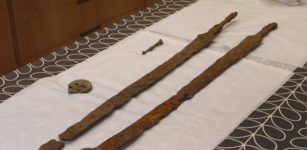 Unique Ancient Roman Cavalry Swords Found In Cotswolds, UK
Archaeology | Sep 18, 2023
Unique Ancient Roman Cavalry Swords Found In Cotswolds, UK
Archaeology | Sep 18, 2023 -
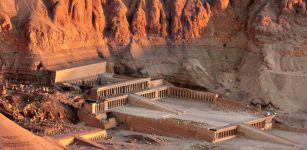 Deir el-Bahri – Sacred Resting Place For The Pharaohs
Featured Stories | Mar 22, 2022
Deir el-Bahri – Sacred Resting Place For The Pharaohs
Featured Stories | Mar 22, 2022 -
 Evidence Mendel Discovered The Laws Of Inheritance Decades Ahead Of His Time
Archaeology | Jul 12, 2022
Evidence Mendel Discovered The Laws Of Inheritance Decades Ahead Of His Time
Archaeology | Jul 12, 2022 -
 On This Day In History: Archbishop Thomas Becket Murdered – On Dec 29, 1170
News | Nov 29, 2016
On This Day In History: Archbishop Thomas Becket Murdered – On Dec 29, 1170
News | Nov 29, 2016 -
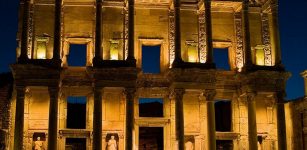 City Of Ephesus And Celsus Library With More Than 12,000 Scrolls
Featured Stories | Sep 17, 2015
City Of Ephesus And Celsus Library With More Than 12,000 Scrolls
Featured Stories | Sep 17, 2015 -
 Brown Hares And Chickens Were Seen As Gods Not Food In Iron Age Britain
Archaeology | Apr 12, 2020
Brown Hares And Chickens Were Seen As Gods Not Food In Iron Age Britain
Archaeology | Apr 12, 2020 -
 Scientists Reconstruct The Climate Of The Ancient World Using Small Wooden Artifacts And Mummies
Archaeology | Apr 5, 2023
Scientists Reconstruct The Climate Of The Ancient World Using Small Wooden Artifacts And Mummies
Archaeology | Apr 5, 2023 -
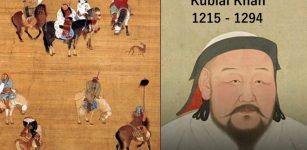 Emperor Kublai Khan: One Of The Most Powerful People In Human History
Featured Stories | May 23, 2017
Emperor Kublai Khan: One Of The Most Powerful People In Human History
Featured Stories | May 23, 2017 -
 John Hawkwood ‘John Sharp’: Feared, English Mercenary And His White Company In 14th Century Italy
Featured Stories | Jun 20, 2020
John Hawkwood ‘John Sharp’: Feared, English Mercenary And His White Company In 14th Century Italy
Featured Stories | Jun 20, 2020 -
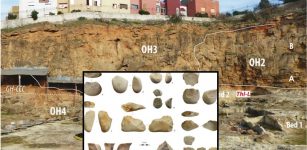 1.3-Million-Year-Old Stone Age Axe Discovered In Morocco Pushes Back The Start Sate Of Acheulian Technology In North Africa
Archaeology | Jul 30, 2021
1.3-Million-Year-Old Stone Age Axe Discovered In Morocco Pushes Back The Start Sate Of Acheulian Technology In North Africa
Archaeology | Jul 30, 2021 -
 4,000-Year-Old Tomb Altóir Na Gréine Rediscovered By Folklorist In County Kerry, Ireland
Archaeology | Jan 24, 2024
4,000-Year-Old Tomb Altóir Na Gréine Rediscovered By Folklorist In County Kerry, Ireland
Archaeology | Jan 24, 2024 -
 Fomorians In Irish Myths And Legends: Race Of Demonic Giants Who Inhabited Ireland And Scotland
Celtic Mythology | May 20, 2017
Fomorians In Irish Myths And Legends: Race Of Demonic Giants Who Inhabited Ireland And Scotland
Celtic Mythology | May 20, 2017 -
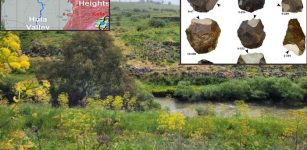 Early Humans In The Hula Valley Invested In Systematic Procurement Of Raw Materials Hundreds Of Thousands Of Years Ago
Archaeology | Jul 19, 2023
Early Humans In The Hula Valley Invested In Systematic Procurement Of Raw Materials Hundreds Of Thousands Of Years Ago
Archaeology | Jul 19, 2023 -
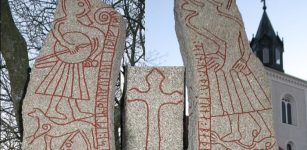 Ledberg Stone (Ledbergsstenen) With Magic Formula Dated To Viking-Era – One Of Most Beautiful Landmarks
Featured Stories | Jan 5, 2023
Ledberg Stone (Ledbergsstenen) With Magic Formula Dated To Viking-Era – One Of Most Beautiful Landmarks
Featured Stories | Jan 5, 2023 -
 Longvek – Ancient Historical City That Sheds Light On Cambodia’s ‘Dark Age’
Archaeology | Jan 13, 2016
Longvek – Ancient Historical City That Sheds Light On Cambodia’s ‘Dark Age’
Archaeology | Jan 13, 2016 -
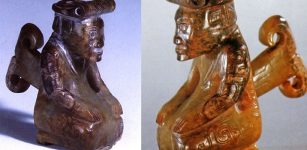 Peculiar Artifact Discovered In Tomb Of The Warrior Queen Fu Hao
Artifacts | Oct 26, 2018
Peculiar Artifact Discovered In Tomb Of The Warrior Queen Fu Hao
Artifacts | Oct 26, 2018 -
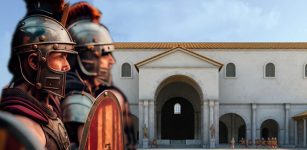 What Can The 3D Reconstruction Of The Principia At Novae Reveal About Roman Propaganda?
News | Sep 16, 2023
What Can The 3D Reconstruction Of The Principia At Novae Reveal About Roman Propaganda?
News | Sep 16, 2023 -
 Artifacts From King Henry VIII’s Warship The Mary Rose – Analyzed
Archaeology | Apr 28, 2020
Artifacts From King Henry VIII’s Warship The Mary Rose – Analyzed
Archaeology | Apr 28, 2020 -
 Ancient Basilica Cistern: Intriguing Hidden Subterranean World With Medusa Heads
Featured Stories | Dec 11, 2018
Ancient Basilica Cistern: Intriguing Hidden Subterranean World With Medusa Heads
Featured Stories | Dec 11, 2018


